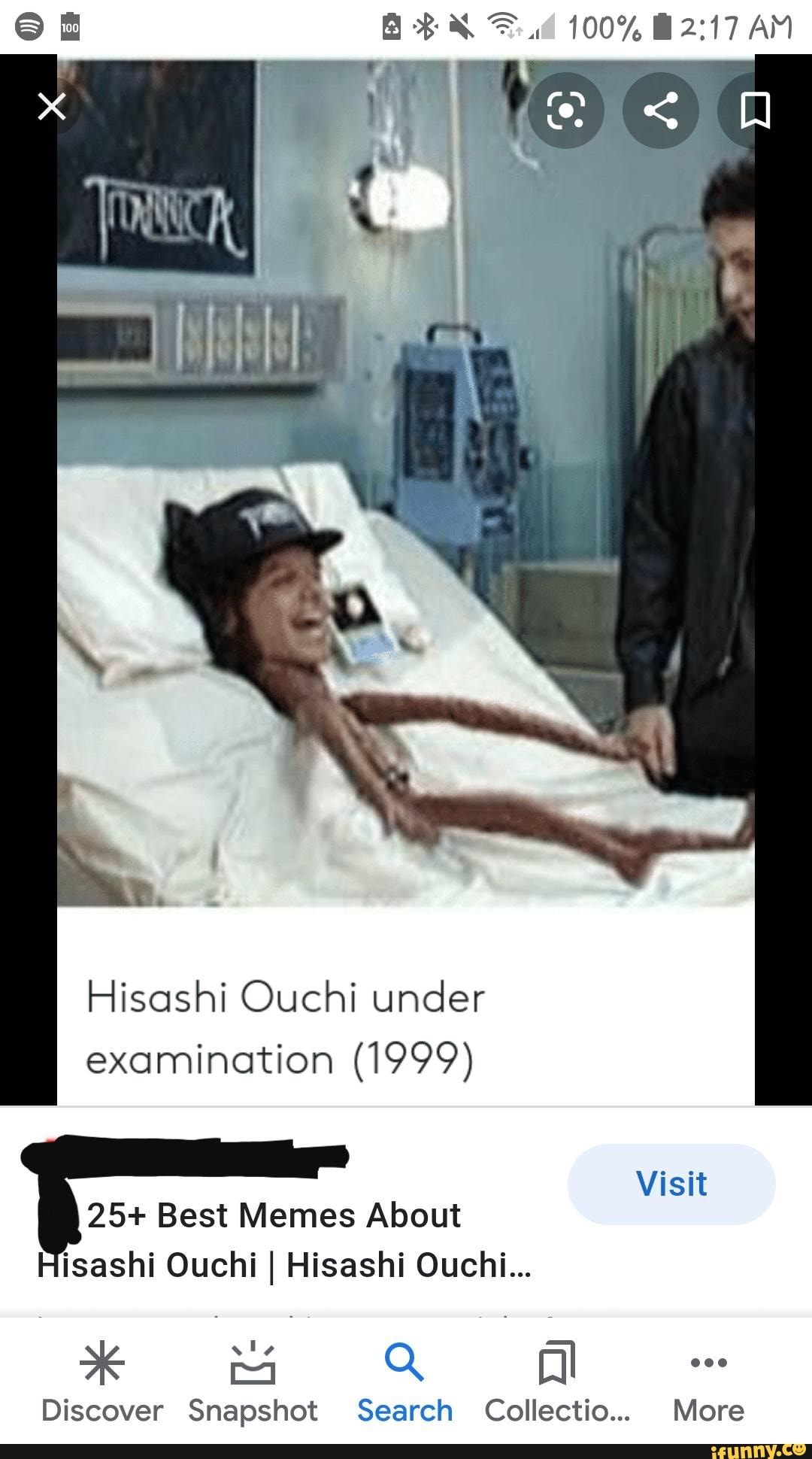Hisashi Ouchi's life is a haunting tale of tragedy and resilience. As one of the victims of the infamous Tokaimura nuclear accident in Japan, his story serves as a stark reminder of the dangers associated with nuclear energy. While many are familiar with the incident, fewer people know about the personal details that defined Ouchi's life and the harrowing aftermath of the accident. Today, we delve into the details surrounding Hisashi Ouchi's life, the infamous real photo that captures his struggle, and how his story continues to resonate with many.
The Tokaimura incident, which occurred in September 1999, was a pivotal event in Japan’s history, leading to significant changes in nuclear regulations and safety protocols. Hisashi Ouchi, a worker at the JCO uranium processing facility, became one of the most recognized names in discussions about nuclear safety and human rights. The real photo of Hisashi Ouchi, often shared online, serves as a haunting reminder of the human cost of industrial negligence. This article explores various aspects of his life, the accident, and the implications it had on nuclear safety in Japan.
As we navigate through this article, we will answer several important questions about Hisashi Ouchi's biography, his experiences during the Tokaimura incident, and the lasting impact of his story. The real photo of Hisashi Ouchi remains a significant part of his legacy, prompting discussions about ethics in the nuclear industry and the treatment of victims in the aftermath of industrial disasters.
Who Was Hisashi Ouchi?
Hisashi Ouchi was a Japanese nuclear worker who became a tragic symbol of the consequences of nuclear accidents. Born in 1966 in Japan, Ouchi had aspirations of a stable career, which led him to work at the JCO uranium processing facility in Tokaimura, Ibaraki Prefecture. His life took a devastating turn on September 30, 1999, when a criticality accident occurred due to improper safety protocols.
What Happened During the Tokaimura Accident?
The Tokaimura nuclear accident was one of the most serious nuclear accidents since the Chernobyl disaster. Ouchi, along with two other workers, was involved in a procedure that led to the accidental formation of a critical mass of uranium. This resulted in a massive release of radiation, exposing Ouchi to lethal doses. While the accident itself was catastrophic, the treatment and response following the incident further complicated Ouchi's situation.
What Were the Medical Consequences for Hisashi Ouchi?
After the accident, Hisashi Ouchi was rushed to the hospital, where he underwent extensive treatment for radiation exposure. Unfortunately, the radiation damage was severe, leading to multiple organ failures and debilitating health issues. Hisashi's condition deteriorated over time, and he endured immense suffering. His case raised questions about the adequacy of medical responses to radiation exposure and the ethical implications of such treatments.
What Does the Real Photo of Hisashi Ouchi Represent?
The real photo of Hisashi Ouchi, often circulated in media and online platforms, depicts him during his hospital stay. It serves as a somber reminder of the human toll of nuclear accidents. The image captures the stark reality of his suffering and the broader implications of industrial negligence. It is crucial to approach this photo with sensitivity, recognizing the pain and loss it represents.
How Did the Public React to Hisashi Ouchi's Story?
The public response to Hisashi Ouchi's story was profound. Many were shocked by the extent of his suffering and the circumstances surrounding the Tokaimura accident. Media coverage highlighted the need for stricter safety regulations in the nuclear industry and raised awareness about the rights of workers in hazardous environments. Ouchi became a symbol of the fight for accountability and change in the nuclear sector.
What Changes Were Implemented in Nuclear Safety Regulations After the Accident?
The Tokaimura nuclear accident prompted significant changes in Japan's nuclear safety regulations. Authorities recognized the need for stricter oversight and better training for workers in the nuclear industry. Some of the crucial changes included:
- Enhanced training programs for nuclear facility workers.
- Stricter enforcement of safety protocols and regulations.
- Increased transparency in reporting accidents and incidents.
- Improved medical response protocols for radiation exposure.
What Legacy Did Hisashi Ouchi Leave Behind?
Hisashi Ouchi's legacy extends beyond his tragic story. He has become a symbol of the importance of nuclear safety and workers' rights. The discussions surrounding his life and the Tokaimura accident continue to influence policies and raise awareness about the potential dangers of nuclear energy. Ouchi’s story reminds us of the human cost associated with industrial accidents and the need for ongoing vigilance in safety practices.
How Can We Remember Hisashi Ouchi Today?
Remembering Hisashi Ouchi involves more than just reflecting on his suffering; it also means advocating for safer working conditions and holding industries accountable for their actions. His story can inspire future generations to prioritize safety and ethics in the workplace, particularly in high-risk industries like nuclear energy.
Where Can We Find the Real Photo of Hisashi Ouchi?
The real photo of Hisashi Ouchi can be found in various online sources, including news articles and documentaries that cover the Tokaimura incident. However, it is essential to approach these images with respect and an understanding of the pain they represent. They serve as a powerful reminder of the need for compassion and change in the face of industrial negligence.
In conclusion, Hisashi Ouchi's life and the tragic events surrounding the Tokaimura nuclear accident continue to evoke strong emotions and critical discussions about safety, ethics, and human rights. The real photo of Hisashi Ouchi stands as a testament to his struggle and the lessons learned from this dark chapter in Japan's history. By remembering Hisashi Ouchi, we honor not just his memory but also the ongoing fight for a safer and more responsible future in the nuclear industry.
Exploring The Relationship Status Of Kaitlan Collins: Is She Married?
Exploring The Fascinating World Of Sondrablust
The Remarkable Height Of Emmanuel Macron: A Closer Look At Macron Height


